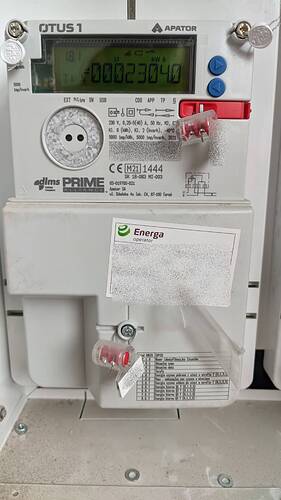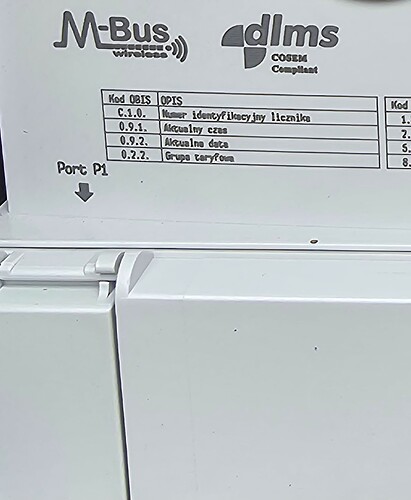On the side of the USB port, let me highlight some sentences from the previously linked document:
ENERGA-OPERATOR SA decided that an USB port is to be used as HAN interface. The requirements of URE do not identify a specific type of port, so each OSD can use any HAN interface in AMI meters. ENERGA-OPERATOR SA chose the USB port because it is an open communications port which gives new technical possibilities associated with the use of AMI meters.
Advantages of the use of USB ports in electricity meters are as follows:
• ability to use any communications technology (from USB to home gateway)
• ability to adapt the communications technology to the meter installation point by using a suitable adapter connected to the USB port
• ability to use wireless and wired communications technologies • the solution is open to application of new, currently unknown technologies
• standardisation of powering of the communications adapter connected to the USB port standardisation of the physical and logical communications layer.
In view of the above, it is clear that some problems and difficulties appeared during the 1st phase of implementation, and ENERGA-OPERATOR SA had to find its own solutions. A strong emphasis was put on interoperability, reliability and innovation of solutions. However, one of the main problems is that on the market there are no finished products that would satisfy all of the requirements of ENERGA-OPERATOR SA:
• there is no smart metering infrastructure which meets the requirements, in particular there are no meters with PRIME communication and a USB port, as well as no balancing meters with required specifications
A USB port is one of the requirements introduced by ENERGAOPERATOR SA to AMI meters. On the one hand, the need to use a communications port in AMI meters arise from the requirements of URE (a specific type of port is not indicated), on the other, the use of an open communication port, i.e. USB, gives new technical possibilities connected with the use of AMI. So far, communications ports have been used in some types of meters, but with many limitations, which could be overcome only in cooperation with the supplier of the particular type of meter and required extra costs. Introduction of a USB port (previously used for communication in personal computers and household devices) to energy meters provides new ways to use electricity meters, for example by communicating the meter with home automation devices, which receive the information that enable optimisation of their operation.
In my translation it sounds like, ENERGA has implemented a communication port (USB) which has not been ever used by anybody for communication on a meter and has no working communication modules for it on the market, but it has possibilities. And fairness it has nothing more to add then a P1 port, because the USB port should operate as virtual serial port, but the only advantage, that the USB device should be on the approved device list to communicate with the meter.
It basically sets a further barrier for any device to be able to receive messages or communicate with the meter. The manufacturer should spend time and money to develop the device, then it has to go through a certification process with the operator to be added to the allowed device list, then you will be able to purchase only that device to communicate with the meter. Knowing the market size and the amount of meters, that would be likely far above the price of any electricity meter which you can install by an electrician for yourself.
Further documentations from ENERGA on the operation of the USB port:
https://energa-operator.pl/upload/wysiwyg/dokumenty_do_pobrania/centrum_informacji/informacje/2017/DT-2-17/Zal1.2-Model_danych_COSEM.DOCX
I would consider that all of these limitations are likely go against the EU directive regarding smart metering as the whole idea is transparency.

